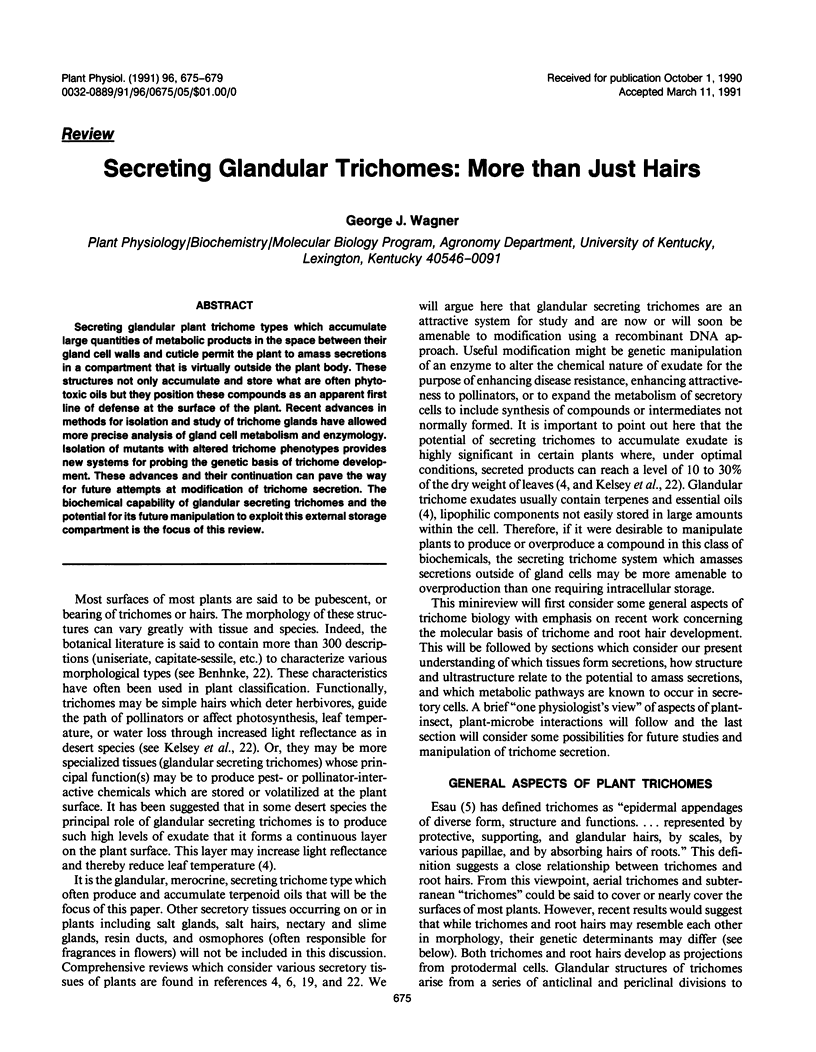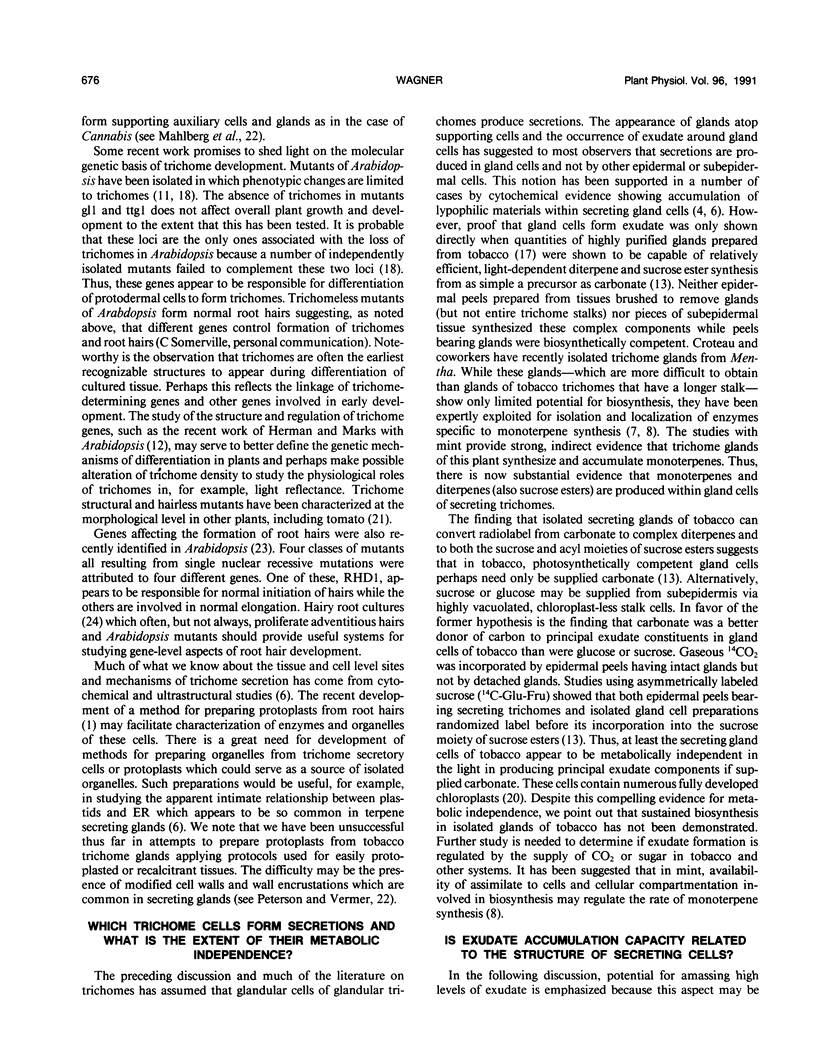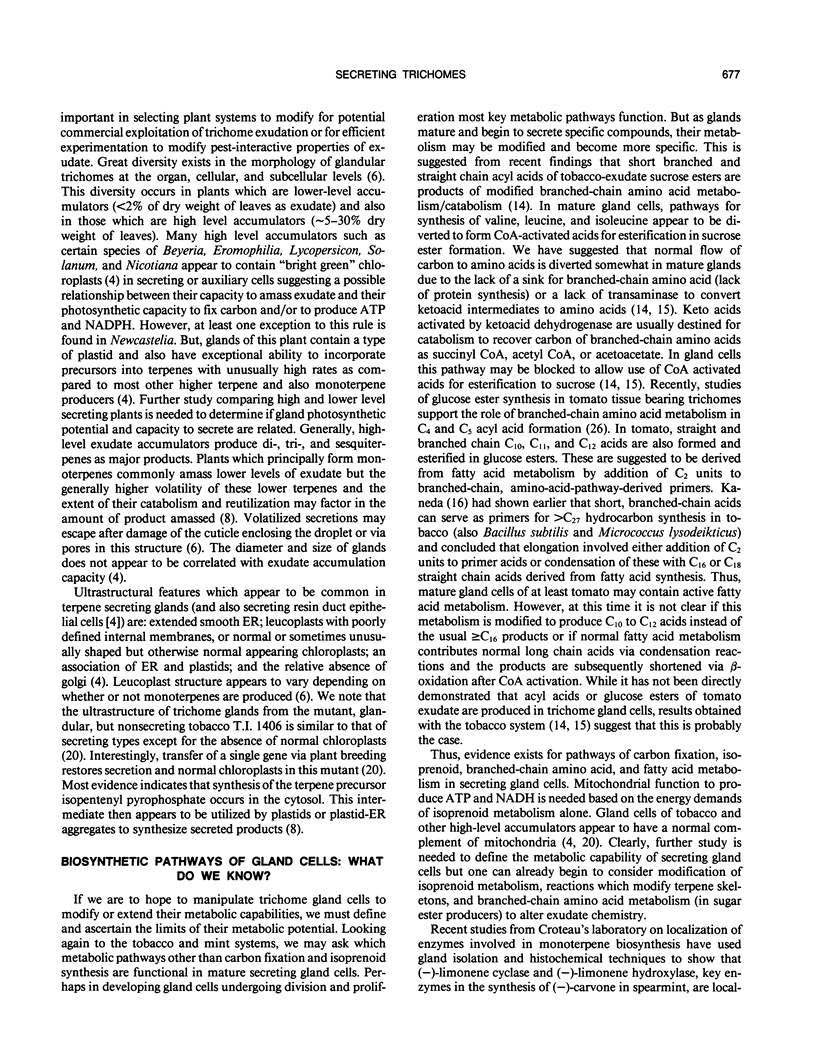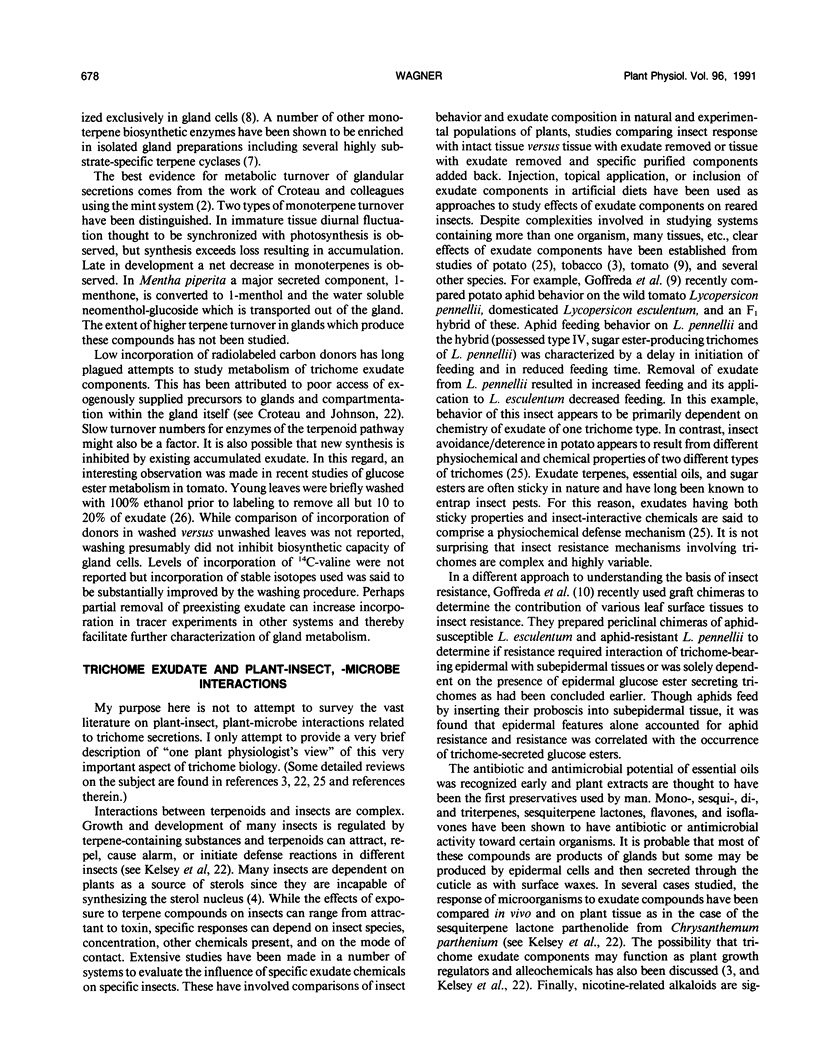Abstract
Secreting glandular plant trichome types which accumulate large quantities of metabolic products in the space between their gland cell walls and cuticle permit the plant to amass secretions in a compartment that is virtually outside the plant body. These structures not only accumulate and store what are often phytotoxic oils but they position these compounds as an apparent first line of defense at the surface of the plant. Recent advances in methods for isolation and study of trichome glands have allowed more precise analysis of gland cell metabolism and enzymology. Isolation of mutants with altered trichome phenotypes provides new systems for probing the genetic basis of trichome development. These advances and their continuation can pave the way for future attempts at modification of trichome secretion. The biochemical capability of glandular secreting trichomes and the potential for its future manipulation to exploit this external storage compartment is the focus of this review.
Full text
PDF




Selected References
These references are in PubMed. This may not be the complete list of references from this article.
- Gershenzon J., Duffy M. A., Karp F., Croteau R. Mechanized techniques for the selective extraction of enzymes from plant epidermal glands. Anal Biochem. 1987 May 15;163(1):159–164. doi: 10.1016/0003-2697(87)90106-0. [DOI] [PubMed] [Google Scholar]
- Goffreda J. C., Szymkowiak E. J., Sussex I. M., Mutschler M. A. Chimeric tomato plants show that aphid resistance and triacylglucose production are epidermal autonomous characters. Plant Cell. 1990 Jul;2(7):643–649. doi: 10.1105/tpc.2.7.643. [DOI] [PMC free article] [PubMed] [Google Scholar]
- Herman P. L., Marks M. D. Trichome Development in Arabidopsis thaliana. II. Isolation and Complementation of the GLABROUS1 Gene. Plant Cell. 1989 Nov;1(11):1051–1055. doi: 10.1105/tpc.1.11.1051. [DOI] [PMC free article] [PubMed] [Google Scholar]
- Kandra G., Severson R., Wagner G. J. Modified branched-chain amino acid pathways give rise to acyl acids of sucrose esters exuded from tobacco leaf trichomes. Eur J Biochem. 1990 Mar 10;188(2):385–391. doi: 10.1111/j.1432-1033.1990.tb15415.x. [DOI] [PubMed] [Google Scholar]
- Kandra L., Wagner G. J. Chlorsulfuron modifies biosynthesis of acyl Acid substituents of sucrose esters secreted by tobacco trichomes. Plant Physiol. 1990 Nov;94(3):906–912. doi: 10.1104/pp.94.3.906. [DOI] [PMC free article] [PubMed] [Google Scholar]
- Kandra L., Wagner G. J. Studies of the site and mode of biosynthesis of tobacco trichome exudate components. Arch Biochem Biophys. 1988 Sep;265(2):425–432. doi: 10.1016/0003-9861(88)90145-2. [DOI] [PubMed] [Google Scholar]
- Kaneda T. Biosynthesis of long-chain hydrocarbons. I. Incorporation of L-valine, L-threonine, L-isoleucine, and L-leucine into specific branched-chain hydrocarbons in tobacco. Biochemistry. 1967 Jul;6(7):2023–2032. doi: 10.1021/bi00859a021. [DOI] [PubMed] [Google Scholar]
- Keene C. K., Wagner G. J. Direct demonstration of duvatrienediol biosynthesis in glandular heads of tobacco trichomes. Plant Physiol. 1985 Dec;79(4):1026–1032. doi: 10.1104/pp.79.4.1026. [DOI] [PMC free article] [PubMed] [Google Scholar]
- Koornneef M., Dellaert L. W., van der Veen J. H. EMS- and radiation-induced mutation frequencies at individual loci in Arabidopsis thaliana (L.) Heynh. Mutat Res. 1982 Mar;93(1):109–123. doi: 10.1016/0027-5107(82)90129-4. [DOI] [PubMed] [Google Scholar]
- Schiefelbein J. W., Somerville C. Genetic Control of Root Hair Development in Arabidopsis thaliana. Plant Cell. 1990 Mar;2(3):235–243. doi: 10.1105/tpc.2.3.235. [DOI] [PMC free article] [PubMed] [Google Scholar]
- Tepfer D. Transformation of several species of higher plants by Agrobacterium rhizogenes: sexual transmission of the transformed genotype and phenotype. Cell. 1984 Jul;37(3):959–967. doi: 10.1016/0092-8674(84)90430-6. [DOI] [PubMed] [Google Scholar]
- Walters D. S., Steffens J. C. Branched Chain Amino Acid Metabolism in the Biosynthesis of Lycopersicon pennellii Glucose Esters. Plant Physiol. 1990 Aug;93(4):1544–1551. doi: 10.1104/pp.93.4.1544. [DOI] [PMC free article] [PubMed] [Google Scholar]


